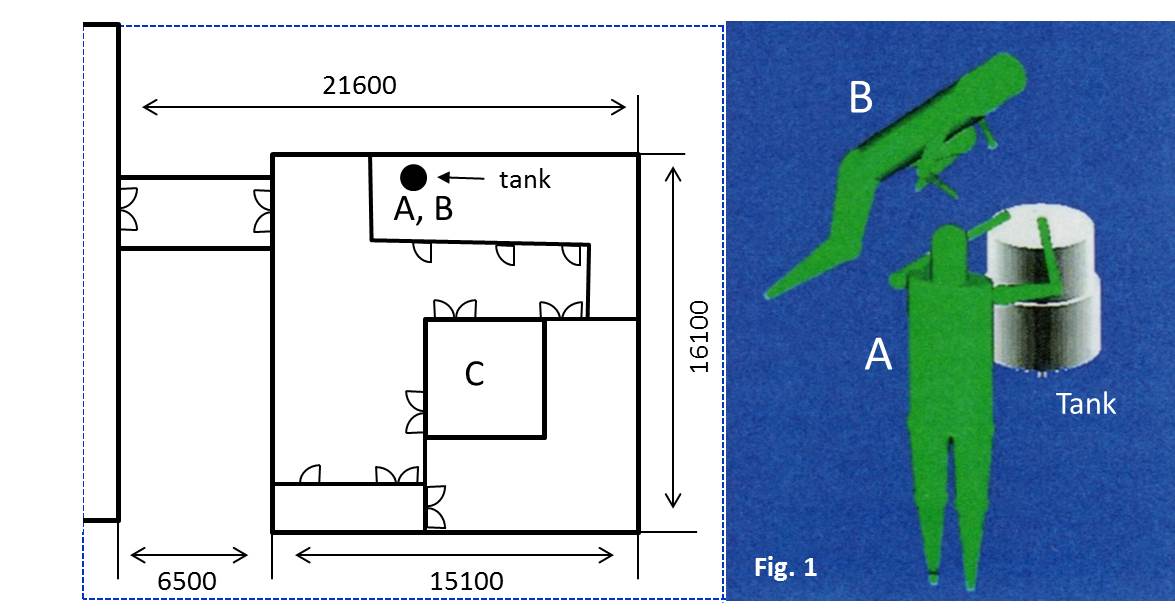On September 30, 1999 (10:35 AM), a criticality accident at a uranium conversion facility of JCO Co., Ltd, Tokai-mura, Japan. The criticality accident was triggered by pouring unscheduled amount of 18.8 % enriched uranium solution into precipitation tank, causing prompt criticality reaction. The reaction continued for about 19 hours until the termination at 6:15 AM on 1 October. Simulated position of workers “A” and “B” relative to the precipitation tank is depicted in Figure 1. Worker “C” was at the desk in the next room with wall between them. Immediately after the burst, they escaped to a locker room which was about 25 m away from the tank. They were all rescued by rescue crews 15 min after accident. During this period, approximately 11 % of all doses were due to the burst in the initial 25 mins.
Relative positioning of workers (Fig. 1): Ishigure, N., Endo, A., Yamaguchi, Y. and Kawachi, K. (2001): Calculation of the absorbed dose for the overexposed patients at the JCO criticality accident in Tokai-mura. J. Raiat. Res., 42(Suppl):S137-S148.
Chromosome aberration analysis performed by I. Hayata, R. Kanda and M. Minamihisamatsu (National Institute of Radiological Science), M. S. Sasaki (RBC, Kyoto University), andY. Kodama (Radiation Effects Research Founadation),

